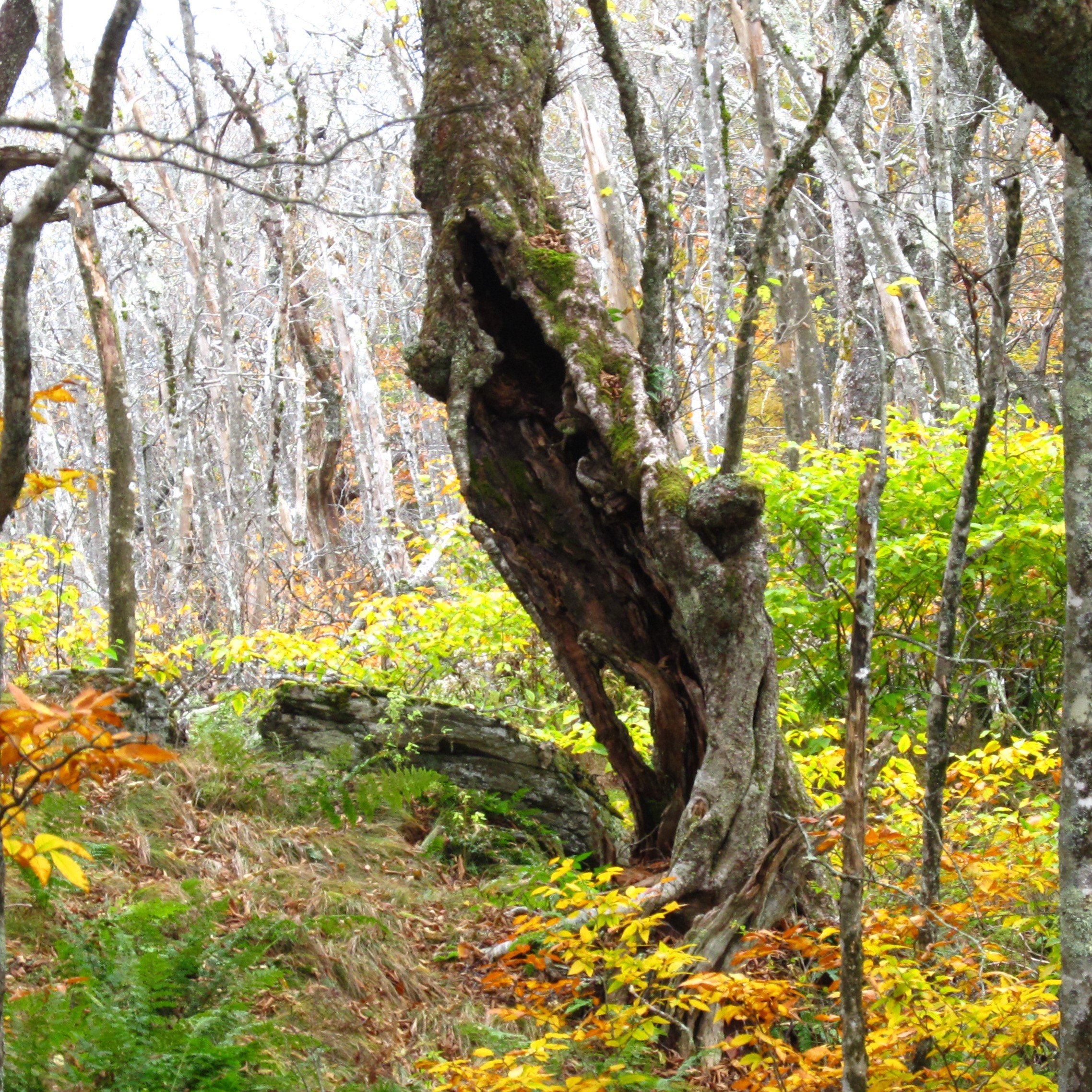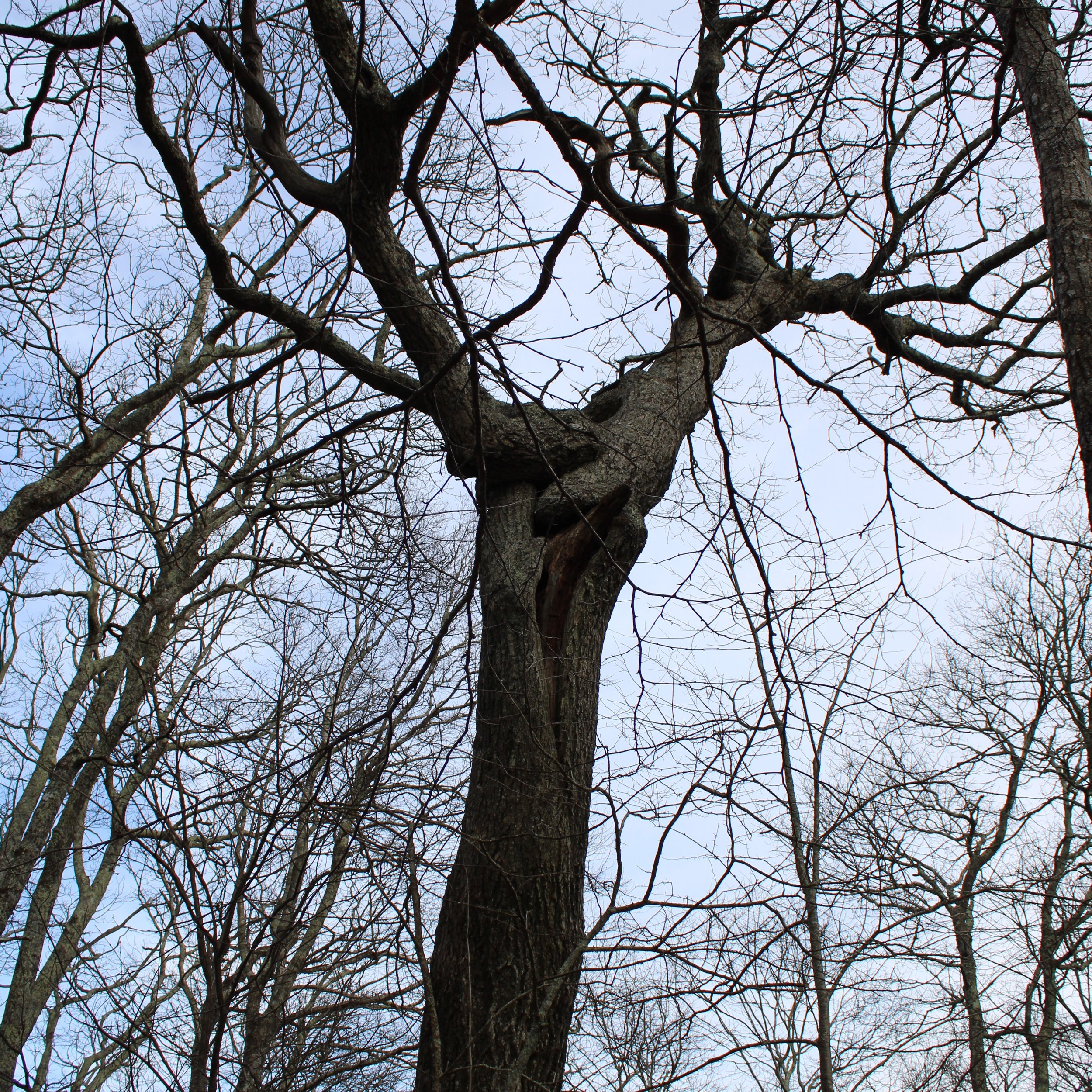Long Branch
Every bonsai has two stories. One story is the definitive one — what species it is, how and when that particular plant started, how and when it became a bonsai, who has owned it along the way, who and what has worked on it over the years and contributed to its appearance. We might think of this story as being comprised of factual information. The other story is the suggested one. It has to do with the impression the bonsai makes on the viewer, and involves both feelings and imagination. By necessity this story is variable.
People do not all see things the same way. Our perception is influenced, perhaps informed entirely, by what we know and don't know, what we've experienced, our opinions, prejudices, beliefs, desires and fears. It is possible that ten different people looking at the same thing see ten different versions of it. This difference in how we see is a key element of what makes our lives in this world both fascinating and difficult. Our differing perceptions can lead to an experience of life as an ever unfolding creative wonder in which we each lend our own distinct interpretation to a harmonic chorus of limitlessly varied expression. Or differing perceptions can lead to confusion, a sense of separation, unhappy disagreement and even violent conflict. In fact, it leads to all of that.
It is therefore possible, even likely, that the person who creates a particular piece of self expression, such as a bonsai, intends it to be perceived a certain way, to tell a certain story, but other people interpret it differently. There is nothing at all wrong with this. Ideas spark other ideas, and diversity is the catalyst in the evolutionary process that pushes all creation forward.
A primary function of The Curator's Journal is to capture and preserve the stories of individual trees in the Arboretum's bonsai collection. Most of this information will consist of the definitive story, as best as it’s known, but will also sometimes touch on a suggested story. The suggested story will be my own interpretation, what I intended to express with the work. It is nothing more than an explanation of the thought process behind the look of any given plant in our collection. My stories may or may not appeal to you and you are free to think differently, creating your own stories based on your own interpretations. Sometimes when I'm out working in the garden I hear other people's stories about our bonsai, and they are often wonderful. In the end what any given bonsai in our collection has to say is up to you.
This entry marks the first case study of a specific bonsai in our collection. As it happens, our subject today is a red maple (Acer rubrum), a piece that has been displayed in the garden on only a couple of brief occasions. For that reason it is likely unfamiliar to most people, although this rather distinctive looking tree will become better recognized as time goes along and it gets more exposure. This specimen has a name — "Long Branch" — and this is what it looks like today:
Side A
Side B
Two features of this tree grab the viewer's eye. The first one likely to be noticed is the gaping wound centrally located on the main line of the tree, which tears down the left side of the trunk heading towards a swollen base with a hole in it. The second feature, perhaps a little less dramatic but nonetheless distinctive, is the lowest branch on the right side of the tree, extending an unusual length while simultaneously sweeping downward, descending to a point about ground level.
This maple started its bonsai career as a one-year seedling back in the late 1990s. It was one of a large number of other red maples of the same age that were probably all from the same seed source. (How we came to acquire this bounty of seedlings and how they set us on a path to virtually cornering the market on red maple bonsai is another story altogether and will be told another day.) This particular tree was one that spent a few years planted in the ground, building up its trunk. The following sequence of images shows what it looked like at the point of collection and introduction to a large wooden grow box, in late autumn of 2010:
2010, before cutting back
2010, after cutting
2010, transplanted to a grow box
The next two images show how the tree progressed in its early development. The first is approximately a year after the tree was planted in the box, and the following image a year after that:
2011
2012
Toward the end of 2013 I made a fateful decision. The lowest branch on the right side of the tree was started from a short, cut-off stub, and young sprouts coming off that were trained with wire to move outward and become the continuation of the primary branch and the beginnings of secondary branching (as seen in the photograph from 2012). I wanted this branch to thicken so those sprouts were allowed to extend without constraint. This is standard procedure for increasing the size of a branch — let it grow way overlong to pump up the amount of energy traveling along that line, and when it gets large enough in caliper, cut back on the branch to bring its length into accord with the overall branch structure of the tree. What happened in 2013 was this: I looked at that overlong branch and found it compelling. Now instead of shortening it as originally intended, I entertained the possibility of letting it remain unusually long, to make it a distinguishing feature of the tree. The limb was pulled downward with twine to bring it closer to the ground and was not headed back at all:
Early 2014
Throughout 2015 and 2016 this low limb was allowed to grow even as I began shaping it along with all the other parts of the tree. My thinking was that I could cut it back at any time if I decided I no longer liked the idea of an extra-long limb as a design element.
2016
By 2017 I felt fairly committed to the long branch, but had grown displeased with how the tree was shaping up otherwise. Specifically, I didn't like the part where the trunk divided into multiple diverging lines. The arrangement of this area looked clunky to me, with a couple of prominent pruning scars, including one smack in the middle of the whole business that stared at me like an unblinking eye:
It finally reached the point where I could not stand it looking at me any longer and so decided to do something about it. "If the eye offends thee... "
2017 before
2017 after (note that the tree was also moved into a bonsai training pot at this time)
It is a strange feeling to intentionally mess up something that you've spent years developing. However when the deed was done I thought the result an improvement. Not only had the problematic area been redefined, the entire tree took on a different personality. I also decided to hollow out several large pruning scars at the base of the tree, which were bunched together, covering up with callous at a rate so slow I thought I wouldn't live long enough to see them finish the job. With these alterations this maple had now assumed a certain individuality. It stood out, not only from other trees in our collection, but from any other maple bonsai I could recall seeing.
The following year this specimen was planted in a better container, one made by the late American potter Dale Cochoy:
2018
Taking off essentially a third of the tree's crown created a feeling of too much empty space on the left side of the composition. The tree responded to the loss it suffered by pushing out numerous new sprouts in the area adjacent to the wound, and a few of them were allowed to remain in order to soften the feeling of barreness there. In the following picture one of these sprouts can be seen being shaped by wire:
2018 detail
At the end of 2018 this gritty red maple celebrated its new image by turning out in showy autumn color:
2018 autumn
The following autumn it made its debut in the bonsai garden. Note that the autumn colors were not so pronounced this time, owing to the fact that the tree was placed in a shaded area on the display bench. The amount of sunlight a deciduous woody plant receives will affect its autumn coloration.
2019 autumn
The last two years have been good ones for this tree, and I now think of it as being fully displayable.
Those are the facts of the case, and so that is the definitive story of this particular red maple. The suggested story is primarily one of damage and recovery, a consistent theme among the bonsai in our collection, because it is a prevailing feature of many of the most dramatic trees found in nature. Limbs torn off, trunks cleaved open, trees in the higher elevations of the Southern Appalachian mountains often show the struggle of life in a harsh environment. They are out there to be seen, if a person goes looking:
Trees with long, extending limbs that come all the way down to the ground are out there, too, but there are fewer of them. A tree growing in the forest must compete with other trees for sunlight, and lower limbs are typically wasted by the tree as it uses its energy to get up higher where the light is. Trees growing in the open are more likely to have large lower limbs, and these would likely droop down to ground level more often if not for the inconvenience they present to humans. Limbs that touch the ground are an obstacle to certain favorite human activities around trees, such as mowing the grass under them or parking in their shade.
At least one species of large tree is well known for its proclivity for laying big branches on the ground: the live oak (Quercus virginiana). Here is one of the most famous, the Angel Oak near Charleston, South Carolina:
Other tree species will do it too, given the right conditions. This is a littleleaf linden (Tilia cordata), growing on the grounds at Thomas Jefferson's Monticello, outside of Charlottesville, Virginia:
But the tree with long limbs touching the ground that made the greatest impression on me is this American Elm (Ulmus americana), growing on the campus of Haverford College in eastern Pennsylvania:
I first saw it in 2012 and returned in 2021 specifically to see it again:
It was the recollection of this specific tree that was in my mind when I looked at the extending branch on the red maple and decided it might be a good idea to let it stay. And so “Long Branch” is a prime example of the effect studying trees in nature can have on bonsai design.




































